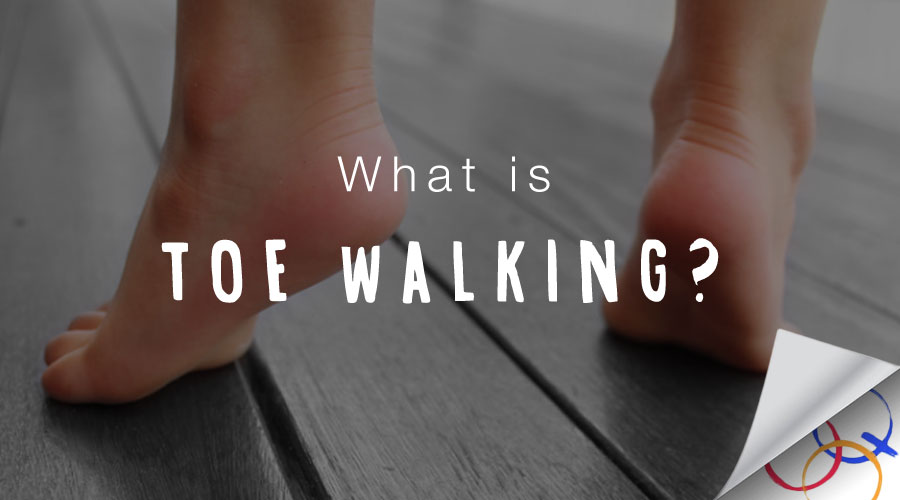

What It Is & How We Can Help
Toe walking also called ‘equinus gait’ is a walking type where the person walks mostly on the ball of their foot (equinus means horse-like, referring to the fact that a horse walks on its toes whilst its heel is elevated off the ground).
In a more typical gait pattern, a person’s heel would strike the ground first, and then their weight transfers forward to finally push-off from the forefoot. Depending on the severity and the context, toe-walkers may rarely or never achieve a heel- strike.
Walking on the toes can be a normal part of motor and gait development, usually occurring in the first 12-18mth after commencing walking and should pass by 2-3 years of age. In this case, children will stand and walk on the toes some of the time for short periods only and otherwise demonstrate normal development and a good repertoire of motor skills across other areas. There is no need to be concerned about this type of toe-walking.
When might toe-walking cause concern then, and why? We know that toe-walking is common in certain neuromuscular conditions such as cerebral palsy and muscular dystrophies. Toe-walking however also occurs on its own, where a clear neuromuscular cause cannot be found. This is called ‘idiopathic toe-walking’ (idiopathic meaning literally ‘with unknown cause’). Despite being idiopathic, toe-walking appears to be more common than average in children and adults with the following diagnoses or risk factors:
- Family history of idiopathic toe-walking (up to 40% in first and second degree relatives!)
- Autism Spectrum Disorders and related conditions
- Developmental Coordination and/or Language Disorders
- ADHD and related conditions
- Premature birth and/or low birthweight
- Hypotonia (lower than typical resting muscle tone)
- Sensory processing differences
Though the majority of idiopathic toe-walkers do not have a diagnosed condition or evidence of any other developmental delays. Children who toe-walk all or most of the time, generally after the age of 3, will not “grow out” of this gait pattern. The implications of this may include compromised opportunities to develop more advanced gait and postural control strategies and motor skills, extremely tight Achilles tendons, problems with the development of the foot as the child grows, and difficulty using the muscles of the trunk and hips in an efficient manner.
What can we do about toe-walking? There is a gaping hole in the evidence base for effective management for idiopathic toe-walking. At Q Paediatrics, our physiotherapists would take a comprehensive developmental history, perform an assessment that looks at many aspects of the child’s neurological, motor and sensory functioning, and determine what may be the contributing factors to that child’s idiopathic toe-walking. Physiotherapists may work with other professionals including Podiatrists and Occupational Therapists to achieve a holistic and effective outcome in paediatric toe-walking.
Common interventions usually combine biomechanical strategies (such as adding heel wedges into
the shoes to encourage a heel strike), sensori-motor strategies (such as developing the strength and
coordination of the postural muscles), and stretching of the calf muscles if they are too tight. Serial
casting, botulinum toxin injections and surgery may be last resort options if conservative treatment
doesn’t work. See your paediatric professional if you are concerned about your child’s toe-walking.
Article written by Sarah Reedman
References:
Sivaramakrishnan S, Seal A. Fifteen-minute consultation: A child with toe walking. Archives of
Disease in Childhood – Education and Practice 2015;100:238-241.
Engström P, Tedroff K. The Prevalence and Course of Idiopathic Toe-Walking in 5-Year- Old Children. Pediatrics 2012;130:279-284.
Pomarino D, Ramirez Llamas J, Martin S, Pomarino A, Lierature Review of Idiopathic Toe Walking: Etiology, Prevalence, Classification, and Treatment. Foot & Ankle Specialist 2017;10:337-342.
